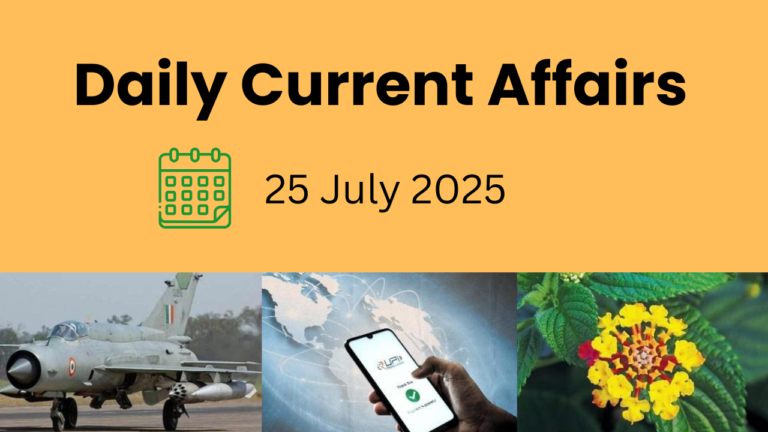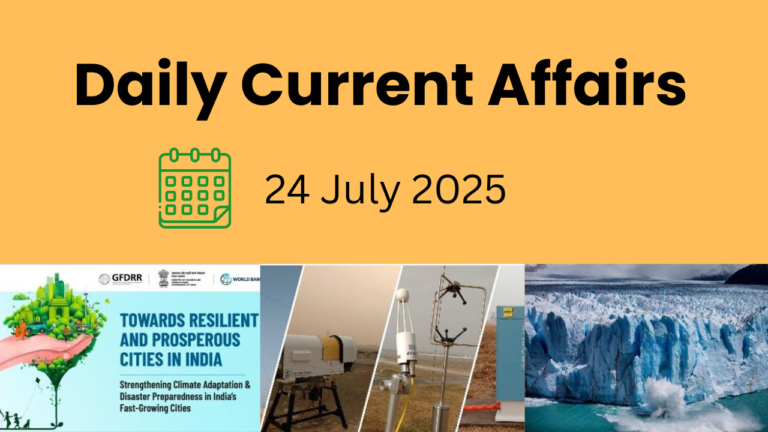1. India-China Relations: 75 Years of Diplomatic Ties
Context: In a notable development, India and China have announced the resumption of the Kailash Mansarovar Yatra this summer, aligning with the 75th anniversary of their diplomatic relationship.
Historical Evolution of India-China Relations
Early Diplomatic Engagement
- India was one of the first nations to recognize the People’s Republic of China in 1950, officially establishing diplomatic ties on April 1, 1950.
- The relationship initially thrived on mutual goodwill, symbolized by the famous slogan ‘Hindi-Chini Bhai Bhai’ (India and China are brothers).
Key Milestones in Bilateral Relations
- Panchsheel Agreement (1954): The five principles of peaceful coexistence laid the foundation for future diplomatic interactions.
- Sino-Indian War (1962): The border conflict led to a severe breakdown in relations.
- Normalization Efforts (1988-1993): Prime Minister Rajiv Gandhi’s visit to China in 1988 marked a thaw, leading to agreements promoting peace and stability along the border.
- Trade Boom (2000s): Bilateral trade surged, making China one of India’s largest trading partners.
- Border Clashes (2017 & 2020): The Doklam standoff (2017) and Galwan Valley clashes (2020) reignited tensions.
- Recent Diplomatic Engagements (2023-2024): Both nations have sought to manage differences through ongoing diplomatic dialogues.
75th Anniversary: Recent Developments & Diplomatic Talks
Foreign Secretary’s Visit to China (2025)
- Border Stability: Agreement to maintain peace and order along the Line of Actual Control (LAC).
- Economic Cooperation: Discussions on enhancing trade and investment ties.
- Cultural Exchanges: Plans to resume cultural programs and educational collaborations.
China’s Call for Stable Ties
- China stressed the need for constructive conflict resolution to ensure a stable relationship.
- The Chinese Foreign Ministry underscored the importance of de-escalation along the LAC.
Restoring Air Connectivity
- India and China agreed to resume direct flights after a five-year hiatus.
- This move aims to boost people-to-people interactions and enhance mutual understanding.
Challenges in India-China Relations
Border Disputes
- Despite continued diplomatic talks, unresolved issues in Ladakh and Arunachal Pradesh remain a major concern.
- The 2020 Galwan clashes are a stark reminder of persistent border tensions.
Trade Imbalance
- Bilateral trade surpassed $125 billion in 2024, reflecting a 1.9% growth year-on-year.
- However, India’s trade deficit with China remains a challenge.
- India is pushing for greater market access for its IT and pharmaceutical sectors.
Geopolitical Rivalry
- India’s increasing collaboration with the QUAD alliance (US, Japan, Australia) is viewed with suspicion by China.
- China’s Belt and Road Initiative (BRI) remains a contentious issue, conflicting with India’s regional connectivity vision.
Path Forward: Opportunities for Cooperation
Boosting Economic Ties
- Strengthening collaboration in renewable energy, digital technology, and infrastructure development can benefit both nations.
- Addressing trade imbalances through mutually beneficial agreements is essential.
Enhancing Cultural & Educational Exchanges
- Encouraging student exchanges, tourism, and academic collaborations can bridge cultural gaps.
Sustained Diplomatic & Military Dialogue
- Regular engagement between military and diplomatic channels is crucial to preventing conflicts.
- Implementing confidence-building measures (CBMs) along the LAC can foster trust.
Conclusion
As India and China commemorate 75 years of diplomatic ties, their relationship remains a blend of cooperation and competition.
- While challenges persist in border disputes and trade, avenues for economic and diplomatic collaboration continue to grow.
- The future of India-China relations will depend on how effectively both nations can balance strategic differences with economic and cultural engagement.
2. Annual Status of Education Report (ASER) 2024
Context: The Annual Status of Education Report (ASER) is a nationwide, citizen-led household survey that provides a snapshot of schooling and learning levels in rural India. The survey assesses both enrolled and out-of-school children, making it a comprehensive tool for understanding India’s education landscape.
- Meaning of ASER: The term ‘aser’ means ‘impact’ in Hindustani.
- Coverage: Tracks children aged 3-16 for enrollment status and tests 5-16-year-olds for basic reading and arithmetic skills.
- Conducted by: ASER Centre in collaboration with the Pratham network.
- Survey Frequency:
- 2005-2014: Conducted annually.
- 2016 onwards: Shifted to an alternate-year model.
- Gap Years: Focused on specific age groups or new aspects of learning.
Previous ASER Surveys
- ASER 2017: Focused on youth (14-18 years), assessing their activities, abilities, and aspirations.
- ASER 2019: Studied early childhood learning (4-8 years), focusing on cognitive and numeracy skills.
- ASER 2023: Assessed digital literacy among 14-18-year-olds.
- ASER 2024: Returned to the ‘basic’ survey format, covering almost all rural districts in India.
Key Findings of ASER 2024
1. Learning Improvements
- Class 3 Students (Government Schools): The proportion of students who could read a Class 2-level text rose to 23.4% in 2024, up from 16.3% in 2022.
- Arithmetic Skills:
- Class 3: Two-thirds of students struggled with subtraction.
- Class 5: Only 30.7% could solve division problems.
- Class 8: 45.8% showed mastery in basic arithmetic.
2. Regional Variations
- States with Notable Gains: Uttar Pradesh, Bihar, Haryana, and Odisha showed significant improvements in reading levels.
- Uttar Pradesh had the largest rise, with a 15-percentage-point improvement in reading skills.
3. Government vs Private Schools
- Government schools have seen a stronger learning recovery post-pandemic.
- Private schools continue to lag behind their pre-pandemic performance.
- Despite progress, 30% of children still struggle with reading a Class 2-level text.
4. School Enrolment Trends
- Overall School Enrolment (Ages 6-14): 98.1%, nearly back to pre-pandemic levels.
- Government School Enrolment:
- 2022: 72.9%
- 2024: 66.8% (decline post-pandemic recovery)
- Underage Children in Class 1: Dropped to 16.7%, the lowest ever recorded.
5. Digital Literacy and Smartphone Use
- Smartphone Ownership (Rural Households): 84% in 2024, a significant increase.
- Teenagers Using Smartphones for Education: 57%, while 76% use them for social media.
- Gender Gap: Boys report higher smartphone ownership and usage than girls.
Driving Factors Behind Learning Trends
- NEP 2020 and Nipun Bharat Mission: Played a crucial role in enhancing foundational literacy and numeracy.
- Digital Tools: Smartphones and online resources have helped continue education post-pandemic.
Challenges and Recommendations
1. Persistent Learning Gaps: While improvements are evident, significant literacy and numeracy gaps remain, particularly in government schools.
2. Unequal Access to Educational Resources: Regional disparities and limited access to digital tools hinder educational progress.
3. Need for Stronger Digital Literacy Initiatives
- Smartphone usage for education is increasing, but a gender gap in digital access persists.
- More structured digital literacy programs are needed to maximize learning outcomes.
4. Enhancing School Readiness Programs: Programs that focus on early childhood learning can help bridge foundational learning gaps.
Conclusion
The ASER 2024 report highlights remarkable improvements in learning outcomes but also underscores the need for sustained efforts to address literacy gaps, digital access inequalities, and enrollment shifts. NEP 2020 and digital education tools have played a key role in driving progress, yet more targeted interventions are required to ensure equitable and effective learning for all children in rural India.
3. Union Budget of India: A Blueprint for Economic Growth
Context: The Union Budget serves as the Government’s financial roadmap, detailing expenditure plans, tax policies, and fiscal strategies that directly influence the nation’s economy and its citizens’ lives. It is referred to as the Annual Financial Statement under Article 112 of the Indian Constitution.
Key Facts About the Budget
- The Budget must be passed by Parliament before it takes effect on April 1, marking the beginning of India’s financial year.
- The Railway Budget was merged with the Union Budget in 2017 following the recommendations of the Bibek Debroy Committee.
- In 2019, Nirmala Sitharaman became the second woman to present the Union Budget, after Indira Gandhi.
Major Components of the Union Budget
The Budget is primarily composed of three key elements: Expenditure, Receipts, and Deficit Indicators.
1. Expenditure
It is categorized into two types:
- Capital Expenditure: Involves spending on assets with a long-term impact, such as building schools, hospitals, and infrastructure.
- Revenue Expenditure: Covers day-to-day expenses such as wages, subsidies, and interest payments, which do not create new assets.
2. Receipts
Government earnings are divided into three categories:
- Revenue Receipts: Includes tax revenues (income tax, GST, corporate tax) and non-tax revenues (dividends, fees, etc.).
- Non-Debt Capital Receipts: Consists of loan recoveries and disinvestment proceeds that do not add liabilities.
- Debt-Creating Capital Receipts: Comprises borrowings and liabilities, requiring future repayments.
3. Fiscal Deficit
- Fiscal Deficit represents the shortfall between total expenditure and the sum of revenue receipts and non-debt receipts.
- A high fiscal deficit indicates excess government spending over earnings, leading to increased borrowing and debt burdens.
Impact of the Union Budget on the Economy
1. Economic Growth: The Budget drives economic expansion through public investments in infrastructure, industry, and welfare schemes, fostering private sector participation.
2. Inflation Control: By adjusting subsidies, taxation policies, and debt management, the Budget plays a crucial role in controlling inflation and maintaining price stability.
3. Fiscal Deficit and Public Debt
- A rising fiscal deficit results in higher borrowing and increased interest rates, impacting economic stability.
- Fiscal discipline ensures sustainable financial health.
4. Taxation and Economic Reforms
- Changes in tax policies affect business investments, consumer spending, and government revenues.
- Reforms like GST and direct tax rationalization enhance efficiency and compliance.
5. Employment Generation: Government allocations for infrastructure development, skill enhancement programs, and social welfare contribute to job creation and poverty reduction.
6. Foreign Investments: Investor-friendly policies attract Foreign Direct Investment (FDI), boosting economic competitiveness and ease of doing business.
7. Social Welfare and Inclusivity
- Increased spending on healthcare, education, and social security enhances living standards and reduces inequality.
- Subsidies on essential goods and services support vulnerable populations.
8. Stock Market & Business Sentiments: The Budget’s tax policies, industry incentives, and economic outlook shape investor confidence and stock market performance.
9. Sustainability and Green Growth
- Emphasis on renewable energy, climate resilience, and eco-friendly projects ensures long-term environmental sustainability.
- Investment in green infrastructure promotes sustainable economic development.
Conclusion
The Union Budget is more than just a financial document—it is a strategic tool that defines India’s economic priorities and sets the course for sustainable growth, fiscal stability, and national development. Its impact resonates across industries, households, and global markets, making it a critical pillar in shaping the country’s future.
4. ISRO’s Historic 100th Launch from Sriharikota
Context: The Indian Space Research Organisation (ISRO) successfully marked its 100th launch from the Satish Dhawan Space Centre, Sriharikota, Andhra Pradesh, by placing the NVS-02 satellite into Geosynchronous Transfer Orbit (GTO) using the GSLV-F15 launch vehicle.
GSLV-F15: The Launch Vehicle
- Three-Stage Rocket: The Geosynchronous Satellite Launch Vehicle (GSLV-F15) is a three-stage launch vehicle, featuring a CUS 15 cryogenic engine in its third stage.
- Payload: The mission carried NVS-02, the second satellite in the NVS series, which is part of India’s Navigation with Indian Constellation (NavIC) system.
NavIC: India’s Own Navigation System
What is NavIC?
NavIC (Navigation with Indian Constellation) is India’s regional navigation satellite system, previously known as the Indian Regional Navigation Satellite System (IRNSS), developed by ISRO.
NavIC Network
- The system consists of a constellation of 7 satellites.
- 3 satellites are placed in geostationary orbit, while 4 satellites are positioned in inclined geosynchronous orbit.
NavIC Services
- Standard Position Service (SPS): Available for civilian users.
- Restricted Service (RS): Dedicated for strategic applications.
Coverage & Accuracy
- Coverage: India and regions extending up to 1,500 km beyond its boundaries.
- Accuracy:
- Positioning Accuracy: Better than 20 meters.
- Timing Accuracy: Better than 40 nanoseconds.
Interoperability with Global Systems
- NavIC’s SPS signals are interoperable with other Global Navigation Satellite Systems (GNSS) like:
- GPS (USA)
- GLONASS (Russia)
- Galileo (European Union)
- BeiDou (China)
About ISRO: India’s Space Pioneer
- Established: August 15, 1969
- Origin: Initially founded as the Indian National Committee for Space Research (INCOSPAR) in 1962, under the vision of Dr. Vikram Sarabhai.
- Headquarters: Bengaluru
- Mission: To develop and apply space technology for India’s progress.
- First Launch: The first experimental flight of SLV-3 (carrying the Rohini Technology Payload) was launched in 1979 under the leadership of Dr. A.P.J. Abdul Kalam.
5. TEAM Initiative to Empower MSMEs in Digital Commerce
Context: The Ministry of Micro, Small & Medium Enterprises (MSME), in partnership with the Open Network for Digital Commerce (ONDC), has introduced the MSME Trade Enablement and Marketing (TEAM) Initiative to boost digital commerce for small businesses.
Key Highlights
- Budget: ₹277.35 crore over three years (FY 2024-25 to FY 2026-27)
- Target Beneficiaries: 5 lakh Micro & Small Enterprises (MSEs), with 50% women-led enterprises
- Implementation Partner: National Small Industries Corporation (NSIC)
- Focus Areas:
- Onboarding MSEs onto ONDC
- Developing digital storefronts, integrated payment solutions & logistics support
- Providing financial aid for seller onboarding, catalog creation & account management
- Conducting 150+ workshops in Tier 2 & Tier 3 cities, prioritizing SC/ST & women entrepreneurs
- Strengthening ties with PM Vishwakarma & Digital MSME schemes
Why TEAM Initiative?
- Bridging MSMEs with Digital Commerce: ONDC integration helps small businesses expand their market reach and lower operational hurdles.
- Formalizing MSMEs: Enables the creation of digital transaction histories, boosting credibility & trust among customers and financial institutions.
- Empowering Startups & Tech Enablers: Facilitates innovation by allowing startups to develop solutions using the ONDC network.
- Enhanced Visibility: A strong digital presence increases brand awareness and attracts new customers.
- Improved Credibility: Establishing formal operations enhances trust and credibility among consumers.
What is ONDC?
The Open Network for Digital Commerce (ONDC) is an initiative by the Department for Promotion of Industry and Internal Trade (DPIIT), under the Ministry of Commerce, Government of India. It aims to democratize digital commerce by reducing the dominance of a few large e-commerce platforms and creating an open, decentralized network where buyers and sellers can seamlessly interact across multiple platforms.
Key Features of ONDC
- Interoperability: Unlike traditional marketplaces (Amazon, Flipkart, etc.), ONDC allows cross-platform transactions, enabling buyers and sellers to interact without platform restrictions.
- Decentralized Network: Instead of being a single platform, ONDC connects multiple e-commerce applications, allowing businesses & individuals to trade seamlessly.
- Inclusivity for MSMEs & Startups: Small businesses can join ONDC without needing their own website or app, helping them expand their reach.
- Competitive Pricing: Eliminates middlemen & high commission structures, enabling sellers to offer better prices.
- Multi-Sector Support: Initially focused on retail & food delivery, ONDC is now expanding into logistics, mobility, wholesale trade, and more.
6. Shifting of Earth’s Magnetic North Pole: A Dynamic Phenomenon
Context: Scientists have unveiled a new model tracking the Magnetic North Pole, revealing that it has moved closer to Siberia and continues to drift towards Russia. This shift highlights the dynamic nature of Earth’s magnetic field and its ever-changing behavior.
Understanding Earth’s Magnetic Poles
What Are Magnetic Poles?
The Magnetic Poles are the points on Earth’s surface where the planet’s magnetic field is directed vertically downward. These poles are not fixed and are influenced by movements deep within the Earth.
Why Do They Move?
Unlike the Geographic North Pole, which remains constant, the Magnetic North Pole shifts due to changes in Earth’s molten core. The first recorded position of the Magnetic North Pole was in 1831 by explorer James Clark Ross, located near Canada’s Arctic islands. Over the past century, it has traveled more than 400 km towards Russia.
Why Is the Magnetic North Pole Shifting?
Several key factors contribute to this movement:
1. Core Fluid Dynamics
- The Earth’s outer core is composed of molten iron and nickel that move in turbulent patterns.
- These fluid motions generate the Earth’s magnetic field and directly influence the position of the poles.
2. Geomagnetic Anomalies
- The South Atlantic Anomaly, a region where Earth’s magnetic field is weaker, suggests instability in the magnetic field.
- Such anomalies contribute to the irregular movement of the Magnetic North Pole.
3. Earth’s Magnetic Reversal Cycle
- The Earth undergoes geomagnetic reversals, where the north and south poles switch places every few hundred thousand years.
- The last reversal, the Brunhes-Matuyama Reversal, occurred around 780,000 years ago.
- While the current shift does not confirm an imminent reversal, it signals long-term geomagnetic changes.
Earth’s Magnetic Field and Its Importance
How Is the Magnetic Field Generated?
- The Earth’s outer core produces the magnetic field through the movement of molten iron and nickel.
- This field extends into space, forming a protective shield around the planet.
Role of the Magnetosphere
The magnetosphere is Earth’s first line of defense against harmful solar wind and cosmic radiation.
- It deflects high-energy particles, protecting life on Earth.
- It traps charged particles in the Van Allen Belts, forming a protective barrier.
- Variations in the solar wind can cause geomagnetic storms, impacting satellites, power grids, and navigation systems.
Consequences of the Magnetic North Pole’s Shift
The shifting Magnetic North Pole has several critical implications:
1. Impact on Navigation
- Aviation and maritime industries rely on magnetic navigation for precise direction-finding.
- Frequent updates to the World Magnetic Model (WMM) are required to maintain accurate navigation.
2. Disruptions to Animal Migration
- Many species, including birds, turtles, and marine animals, use the Earth’s magnetic field for navigation.
- Changes in the magnetic field may disrupt their migration patterns, affecting ecosystems.
3. Increased Vulnerability to Solar Storms
- The weakening of the magnetic field makes the Earth more exposed to solar storms.
- This could disrupt communication systems, GPS technology, and power grids.
4. Scientific Insights: The shifting Magnetic North Pole offers an opportunity for scientists to study the Earth’s geodynamo and predict future changes in the magnetic field.
Conclusion:
The continued movement of the Magnetic North Pole highlights the dynamic nature of Earth’s interior. While it does not indicate an imminent disaster, understanding these shifts is crucial for navigation, wildlife conservation, and technological security. Scientists will continue monitoring these changes to better predict their long-term effects on our planet.




